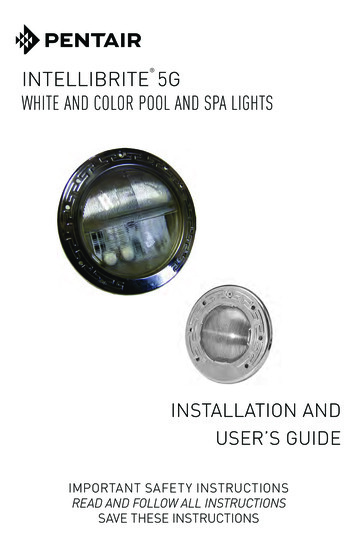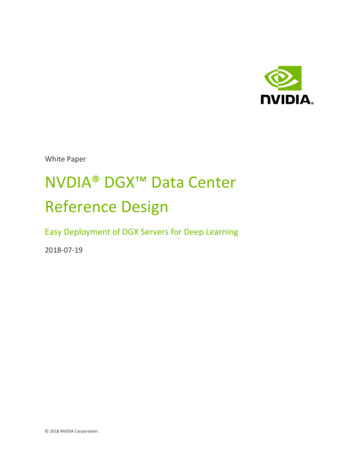
Transcription
White PaperNVDIA DGX Data CenterReference DesignEasy Deployment of DGX Servers for Deep Learning2018-07-19 2018 NVIDIA Corporation.
ContentsAbstractii1.AI Workflow and Sizing12.NVIDIA AI Software23.DGX POD54.DGX POD Installation and Management85.Summary 2018 NVIDIA Corporation.11 i
AbstractThe NVIDIA DGX family of supercomputers for artificial intelligence (AI) and the NVIDIA GPUCloud (NGC) Deep Learning (DL) containers provide the world’s best solution for AI softwaredevelopment. However, many organizations are unsure how to size, install, and manage a DGXinfrastructure for large-scale AI development efforts. The DGX POD reference architectureprovides a blueprint for easy sizing and deployment of DGX servers for large-scale DL. A DGX PODis a single data center rack containing up to nine NVIDIA DGX-1 servers, storage, networking,and NVIDIA AI software to support workgroups of AI developers. Multiple DGX PODs can becombined into a cluster to support larger workgroups. The DGX POD reference architecture isbased on the NVIDIA DGX SATURNV AI supercomputer which has 1000 DGX-1 servers and powersautonomous vehicle software and internal AI R&D across NVIDIA research, graphics, HPC, androbotics.This white paper is divided into the following sections: AI Workflow and SizingNVIDIA AI SoftwareDGX POD DesignDGX POD Installation and Management 2018 NVIDIA Corporation. ii
1. AI Workflow and SizingA typical AI software development workflow follows the steps shown in the following nedModelsOptimizedModelsFigure 1. AI workflowThe workflow is detailed as follows:1. A data factory collects raw data and includes tools used to pre-process, index, label, andmanage data.2. AI models are trained with labeled data using a DL framework from the NVIDIA GPUCloud (NGC) container repository running on DGX servers with Volta Tensor Core GPUs.3. AI model testing and validation adjusts model parameters as needed and repeats traininguntil the desired accuracy is reached.4. AI model optimization for production deployment (inference) is completed using theNVIDIA TensorRT optimizing inference accelerator.Sizing DL training is highly dependent on data size and model complexity. A single DGX-1 cancomplete a training experiment on a wide variety of AI models in one day. For example, theautonomous vehicle software team at NVIDIA developing NVIDIA DriveNet uses a customResnet-18 backbone detection network with 960x480x3 image size and trains at 480 images persecond on a DGX-1 server allowing training of 120 epochs with 300k images in 21 hours. Internalexperience at NVIDIA has shown that five developers collaborating on the development of one AImodel provides the optimal development time. Each developer typically works on two models inparallel thus the infrastructure needs to support ten model training experiments within thedesired TAT (turn-around-time). A DGX POD with nine DGX-1 servers can provide one day TATfor model training for the five-developer workgroup. During schedule-critical times, multi-nodescaling can reduce turnaround time from one day to four hours using eight DGX-1 servers. Oncein production, additional DGX-1 servers will be necessary to support on-going model refinementand regression testing. 2018 NVIDIA Corporation. 1
2. NVIDIA AI SoftwareNVIDIA AI software running on the DGX POD provides a high-performance DL trainingenvironment for large scale multi-user AI software development teams. NVIDIA AI softwareincludes the DGX operating system (DGX OS), cluster management and orchestration tools,NVIDIA libraries and frameworks, workload schedulers, and optimized containers from the NGCcontainer registry. To provide additional functionality, the DGX POD management softwareincludesthird-party open-source tools recommended by NVIDIA which have been tested to work on DGXPODs with the NVIDIA AI software stack. Support for these tools can be obtained directly throughthird-party support structures.Figure 2. NVIDIA AI softwareThe foundation of the NVIDIA AI software stack is the DGX OS, built on an optimized version ofthe Ubuntu Linux operating system and tuned specifically for the DGX hardware.The DGX OS software includes certified GPU drivers, a network software stack,pre-configured NFS caching, NVIDIA data center GPU management (DCGM) diagnostic tools,GPU-enabled container runtime, NVIDIA CUDA SDK, cuDNN, NCCL and other NVIDIA libraries,and support for NVIDIA GPUDirect . The DGX OS software can be automatically re-installed ondemand by the DGX POD management software.The management software layer of the DGX POD (Figure 3) is composed of various servicesrunning on the Kubernetes container orchestration framework for fault tolerance and highavailability. Services are provided for network configuration (DHCP) and fully-automated DGX OSsoftware provisioning over the network (PXE). 2018 NVIDIA Corporation. 2
Monitoring of the DGX POD utilizes Prometheus for server data collection and storage in a timeseries database. Cluster-wide alerts are configured with Alertmanager, and DGX POD metrics aredisplayed using the Grafana web interface. For sites required to operate in an air-gappedenvironment or needing additional on-premises services, a local container registry mirroring NGCcontainers, as well as Ubuntu and Python package mirrors, can be run on the Kubernetesmanagement layer to provide services to the cluster.Figure 3. DGX POD management softwareThe DGX POD software allows for dynamic partitioning between the nodes assigned toKubernetes and Slurm such that resources can be shifted between the partitions to meet thecurrent workload demand. A simple user interface allows administrators to move DGX-1 serversbetween Kubernetes- and Slurm-managed domains.Kubernetes serves the dual role of running management services on management nodes as wellas accepting user-defined workloads, and is installed on every server in the DGX POD. Slurm runsonly user workloads and is installed on the login node as well as the DGX compute nodes. TheDGX POD software allows individual DGX-1 servers to run jobs in either Kubernetes or Slurm.Kubernetes provides a high level of flexibility in load balancing, node failover, and bursting toexternal Kubernetes clusters, including NGC public cloud instances. Slurm supports a more staticcluster environment but provides advanced HPC-style batch scheduling features including multinode scheduling that some workgroups may require. With the DGX POD software, idle systemscan be moved back and forth as needed between the Kubernetes and Slurm environments.Future enhancements to Kubernetes are expected to support all DGX POD use cases in a pureKubernetes environment.User workloads on the DGX POD primarily utilize containers from NGC (Figure 4), which providesresearchers and data scientists with easy access to a comprehensive catalog of GPU-optimizedsoftware for DL, HPC applications, and HPC visualization that take full advantage of the GPUs. TheNGC container registry includes NVIDIA tuned, tested, certified, and maintained containers forthe top DL frameworks such as TensorFlow, PyTorch, and MXNet. NGC also has third-partymanaged HPC application containers, and NVIDIA HPC visualization containers. 2018 NVIDIA Corporation. 3
Figure 4. NGC overviewManagement of the NVIDIA AI software on the DGX POD is accomplished with the Ansibleconfiguration management tool. Ansible roles are used to install Kubernetes on the managementnodes, install additional software on the login and DGX-1 servers, configure user accounts,configure external storage connections, install Kubernetes and Slurm schedulers, as well asperforming day-to-day maintenance tasks such as new software installation, software updates,and GPU driver upgrades.The software management stack and documentation are available as an open source project onGitHub at:https://github.com/NVIDIA/deepops 2018 NVIDIA Corporation. 4
3. DGX PODThe DGX POD (Figure 5) is an optimized data center rack containing up to nine DGX-1 servers,twelve storage servers, and three networking switches to support single and multi-node AI modeltraining and inference using NVIDIA AI software.There are several factors to consider when planning a DGX POD deployment in order todetermine if more than one rack is needed per DGX POD. This reference architecture is based ona single 35 kW high-density rack to provide the most efficient use of costly data center floorspaceand to simplify network cabling. As GPU usage grows, the average power per server and powerper rack continues to increase. However, older data centers may not yet be able to support thepower and cooling densities required; hence the three-zone design allowing the DGX PODcomponents to be installed in up to three lower-power racks.The DGX POD is designed to fit within a standard-height 42 RU data center rack. A taller rack canbe used to include redundant networking switches, a management switch, and login servers. Thisreference architecture uses an additional utility rack for login and management servers, and hasbeen sized and tested with up to six DGX PODs. Larger configurations of DGX PODs can bedefined by an NVIDIA solution architect.A primary 10 GbE (minimum) network switch is used to connect all servers in the DGX POD and toprovide access to a data center network. The DGX POD has been tested with an Arista switchwith 48 x 10 GbE ports and 4 x 40 GbE uplinks. VLAN capabilities of the networking hardware areused to allow the out-of-band management network to run independently from the datanetwork, while sharing the same physical hardware. Alternatively, a separate 1 GbE managementswitch may be used. While not included in the reference architecture, a second 10 GbE networkswitch can be used for redundancy and high availability. In addition to Arista, NVIDIA is workingwith other networking vendors who plan to release switch reference designs compatible with theDGX POD.A 36-port Mellanox 100 Gbps switch is configured to provide four 100 Gbps InfiniBandconnections to the nine DGX-1 servers in the rack. This provides the best possible scalability formulti-node jobs. In the event of switch failure, multi-node jobs can fall back to use the 10 GbEswitch for communications. The Mellanox switch can also be configured in 100 GbE mode fororganizations that prefer to use Ethernet networking. Alternately, by configuring two 100 Gbpsports per DGX-1 server, the Mellanox switch can also be used by the storage servers.With the DGX family of servers, AI and HPC workloads are fusing into a unified architecture. Fororganizations that want to utilize multiple DGX PODs to run cluster-wide jobs, a core InfiniBandswitch is configured in the utility rack in conjunction with a second 36-port Mellanox switch inDGX POD. 2018 NVIDIA Corporation. 5
Nine DGX-1 servers(9 x 3 RU 27 RU)Twelve storage servers(12 x 1 RU 12 RU)10 GbE (min) storage and management switch(1 RU)Mellanox 100 Gbps intra-rack high speed network switches(1 or 2 RU)Figure 5. Elevation of a DGX PODStorage architecture is important for optimized DL training performance. The DGX POD uses ahierarchical design with multiple levels of cache storage using the DGX-1 SSD and additionalcache storage servers in the DGX POD. Long-term storage of raw data can be located on a widevariety of storage devices outside of the DGX POD, either on-premises or in public clouds.The DGX POD baseline storage architecture consists of standard NFS on the storage servers inconjunction with the local DGX SSD cache. Additional storage performance may be obtained byusing the Ceph object-based file system or other caching file system on the storage servers. 2018 NVIDIA Corporation. 6
The DGX POD is also designed to be compatible with a number of third-party storage solutions,see the reference architectures from DDN, NetApp, and Pure Storage for additional information.NVIDIA is also working with other storage vendors who plan to release DGX POD compatiblereference architectures.While based on the DGX-1 server, the DGX POD has been designed in a modular fashion tosupport the NVIDIA DGX-2 server which starts shipping in Q3 of 2018. Each of the threecompute zones in a DGX POD is designed such that the three DGX-1 servers in the compute zonecan be replaced with a single DGX-2 server.A partial elevation of a DGX POD utility rack is shown in Figure 6.Login server which allows users to login to thecluster and launch Slurm batch jobs1.(1 RU)Three management servers running Kubernetesserver components and other DGX PODmanagement software2.(3 x 1 RU 3 RU)Optional multi-POD 10 GbE storage andmanagement network switches(2 RU)Optional multi-POD clustering using a Mellanox216 port EDR InfiniBand switch.(12 RU)Figure 6. Partial elevation of a DGX POD utility rack1 Tosupport many users, the login server should have at two high-end CPUs, at least 1 TB of memory, two links to the 100 Gbpsnetwork, and redundant fans and power supplies.2 These servers can be lower performance than the login server and can be configured with mid-range CPUs and less memory (128 to256 GB). 2018 NVIDIA Corporation. 7
4. DGX POD Installation and ManagementDeploying a DGX POD is similar to deploying traditional servers and networking in a rack.However, with high-power consumption and corresponding cooling needs, server weight, andmultiple networking cables per server, additional care and preparation is needed for a successfuldeployment. As with all IT equipment installation, it is important to work with the data centerfacilities team to ensure the DGX POD environmental requirements can be met.Additional DGX site requirements are detailed in the NVIDIA DGX Site Preparation Guide butimportant items to consider include:AreaDesign GuidelinesRack Supports 3000 lbs of static loadDimensions of 1200 mm depth x 700 mm widthStructured cabling pathways per TIA 942 standardCooling3 Removal of 119,420 BTU/hrASHRAE TC 9.9 2015 Thermal Guidelines “Allowable Range” North America: A/B power feeds, each three-phase 400V/60A/33.2kW(or three-phase 208V/60A/17.3 kW with additional considerations forredundancy as required)International: A/B power feeds, each 380/400/415V, 32A, three-phase –21-23kW each.Power 3Via rack cooling door or data center hot/cold aisle air containmentTable 1. Rack, cooling, and power considerations for a 35 kW DGX PODFigure 7 shows the server components and networking of the DGX POD. Management servers,login servers, DGX compute servers, and storage communicate over a 1 or 10 Gbps Ethernetnetwork, while login servers, DGX compute servers and optionally storage can also communicateover high-speed 100 Gbps Infiniband or Ethernet. The DGX compute servers shown here arerunning both Kubernetes and Slurm to handle varying user workloads. 2018 NVIDIA Corporation. 8
DGX NodesLogin ServerSlurm ManagedWANKubernetes ManagedStorage ServersManagement NodesFigure 7. DGX POD networkingWhether deploying single or multiple DGX PODs, it is best to use tools that take care of themanagement of all of the nodes. Use the NVIDIA AI software stack to provide an end-to-endsolution from server OS installation to user job management.Installing the NVIDIA AI software stack on DGX PODs requires meeting a basic set of hardwareand software prerequisites, setting local configuration parameters, and deploying the clusterfollowing step-by-step instructions. Optional installation steps include configuring multiple jobschedulers and integrating with enterprise authentication and storage systems.Once the PODs are powered-on and configured, verify all the components are working correctly.This can be an involved process. During this operational checkout, the following should beverified: Compute hardware, networking, and storage are operating as expectedPower distribution works properly under maximum possible loadAdditional site tests as may be required for the data centerThe first step to validate DGX-1 server installation is performed using the diagnostic feature ofDCGM. This tests many different GPU functions including memory, PCIe bus, SM units, memorybandwidth, and NVLink. DCGM will draw close to maximum server power during operation and 2018 NVIDIA Corporation. 9
thus is a good stress test of server power and cooling. By running this test simultaneously acrossall nodes using Kubernetes, it will stress the rack-level power, cooling, and airflow.The complete DCGM test takes approximately ten minutes to run on each DGX-1. This test shouldbe run back to back for several hours to stress-test the DGX POD and ensure correct completionof each iteration.To test DL training, the NGC containers have built-in example scripts to check several differentfamilies of networks including image classification and language modeling via LSTMs. Forexample, the NGC TensorFlow Container contains scripts to test the major ImageNet Networks(Resnet-50, Inception, VGG-16, etc.) and allows for scalable server testing with real data or insynthetic mode.In addition, test any local applications that are planned to be run on the DGX POD. Allperformance results measured during server installation should be saved and used during routineretesting of the DGX POD to verify performance consistency as servers are modified and updated.Day-to-day operation and ongoing maintenance of a DGX POD is greatly simplified by the NVIDIAAI software stack. Typical operations such as installing new software, performing serverupgrades, and managing scheduler allocations and reservations can all be handled automaticallywith simple commands. 2018 NVIDIA Corporation. 10
5. SummaryThe DGX POD reference architecture provides organizations a blueprint to simplify deployment ofGPU computing infrastructure to support large-scale AI software development efforts. A singleDGX POD supporting small workgroups of AI developers can be grown into an infrastructuresupporting thousands of users. The DGX POD reference architecture is based on the NVIDIA DGXSATURNV AI supercomputer which has 1000 DGX-1 servers and powers autonomous vehiclesoftware and internal AI R&D across NVIDIA research, graphics, HPC, and robotics.The DGX POD has been design and tested by using specific storage and networking partners. Inaddition to those mentioned in this paper, NVIDIA is working with additional storage andnetworking vendors who plan to publish DGX POD-compatible reference architectures using theirspecific products.Because most installations of a DGX POD will require small differences such as cable length tointegrate into your data center, NVIDIA does not sell DGX POD as a single unit. Work with anauthorized NVIDIA Partner Network (NPN) reseller to configure and purchase a DGX POD.Finally, this white paper is meant to be a high-level overview and is not intended to be astep-by-step installation guide. Customers should work with an NPN provider to customize aninstallation plan for their organization. 2018 NVIDIA Corporation. 11
Legal Notices and TrademarksLegal NoticesALL INFORMATION PROVIDED IN THIS WHITE PAPER, INCLUDING COMMENTARY, OPINION, NVIDIA DESIGN SPECIFICATIONS,REFERENCE BOARDS, FILES, DRAWINGS, DIAGNOSTICS, LISTS, AND OTHER DOCUMENTS (TOGETHER AND SEPARATELY, "MATERIALS")ARE BEING PROVIDED "AS IS." NVIDIA MAKES NO WARRANTIES, EXPRESSED, IMPLIED, STATUTORY, OR OTHERWISE WITH RESPECT TOMATERIALS, AND EXPRESSLY DISCLAIMS ALL IMPLIED WARRANTIES OF NONINFRINGEMENT, MERCHANTABILITY, AND FITNESS FOR APARTICULAR PURPOSE.NVIDIA reserves the right to make corrections, modifications, enhancements, improvements, and other changes to this specification,at any time and/or to discontinue any product or service without notice. Customer should obtain the latest relevant specificationbefore placing orders and should verify that such information is current and complete. NVIDIA products are sold subject to the NVIDIAstandard terms and conditions of sale supplied at the time of order acknowledgement, unless otherwise agreed in an individual salesagreement signed by authorized representatives of NVIDIA and customer. NVIDIA hereby expressly objects to applying any customergeneral terms and conditions with regard to the purchase of the NVIDIA product referenced in this specification. NVIDIA products arenot designed, authorized or warranted to be suitable for use in medical, military, aircraft, space or life support equipment, nor inapplications where failure or malfunction of the NVIDIA product can reasonably be expected to result in personal injury, death orproperty or environmental damage. NVIDIA accepts no liability for inclusion and/or use of NVIDIA products in such equipment orapplications and therefore such inclusion and/or use is at customer's own risk. NVIDIA makes no representation or warranty thatproducts based on these specifications will be suitable for any specified use without further testing or modification. Testing of allparameters of each product is not necessarily performed by NVIDIA. It is customer's sole responsibility to ensure the product issuitable and fit for the application planned by customer and to do the necessary testing for the application in order to avoid a defaultof the application or the product. Weaknesses in customer's product designs may affect the quality and reliability of the NVIDIAproduct and may result in additional or different conditions and/or requirements beyond those contained in this specification. NVIDIAdoes not accept any liability related to any default, damage, costs or problem which may be based on or attributable to: (i) the use ofthe NVIDIA product in any manner that is contrary to this specification, or (ii) customer product designs. No license, either expressedor implied, is granted under any NVIDIA patent right, copyright, or other NVIDIA intellectual property right under this specification.Information published by NVIDIA regarding third-party products or services does not constitute a license from NVIDIA to use suchproducts or services or a warranty or endorsement thereof. Use of such information may require a license from a third-party underthe patents or other intellectual property rights of the third party, or a license from NVIDIA under the patents or other intellectualproperty rights of NVIDIA. Reproduction of information in this specification is permissible only if reproduction is approved by NVIDIAin writing, is reproduced without alteration, and is accompanied by all associated conditions, limitations, and notices.TrademarksNVIDIA, the NVIDIA logo, CUDA, Tesla, NVLink, DGX, DGX-1, and GPUDirect are trademarks or registered trademarks of NVIDIACorporation in the United States and other countries. Other company and product names may be trademarks of the respectivecompanies with which they are associated.Copyright 2018 NVIDIA Corporation. All rights reserved. 2018 NVIDIA Corporation. iii
Jul 19, 2018 · provide access to a data center network. The DGX POD has been tested with an Arista switch with 48 x 10 GbE ports and 4 x 40 GbE uplinks. VLAN capabilities of the networking hardware are used to allow the out-of-band management network to run independently from the data
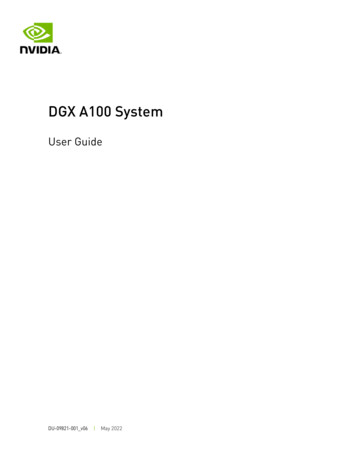
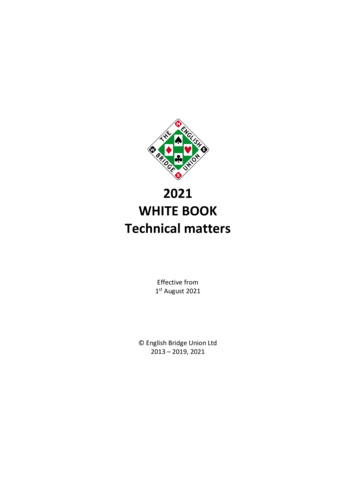

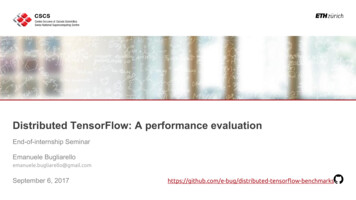


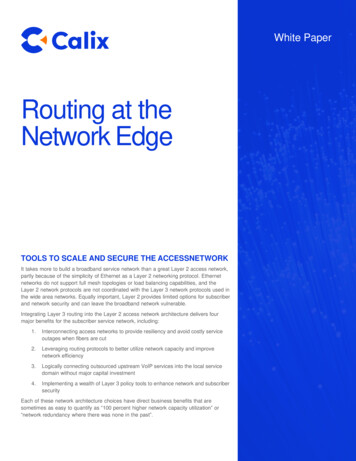

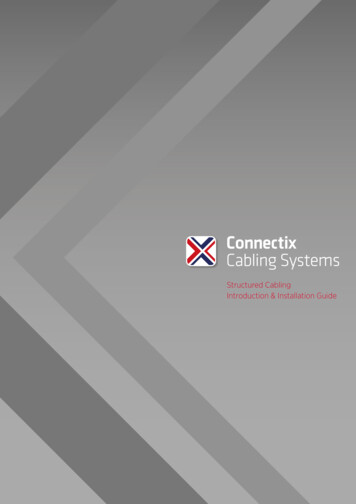
![[CLASS XII CHEMISTRY PRACTICALS]](/img/23/xii-chemistry-practical.jpg)
